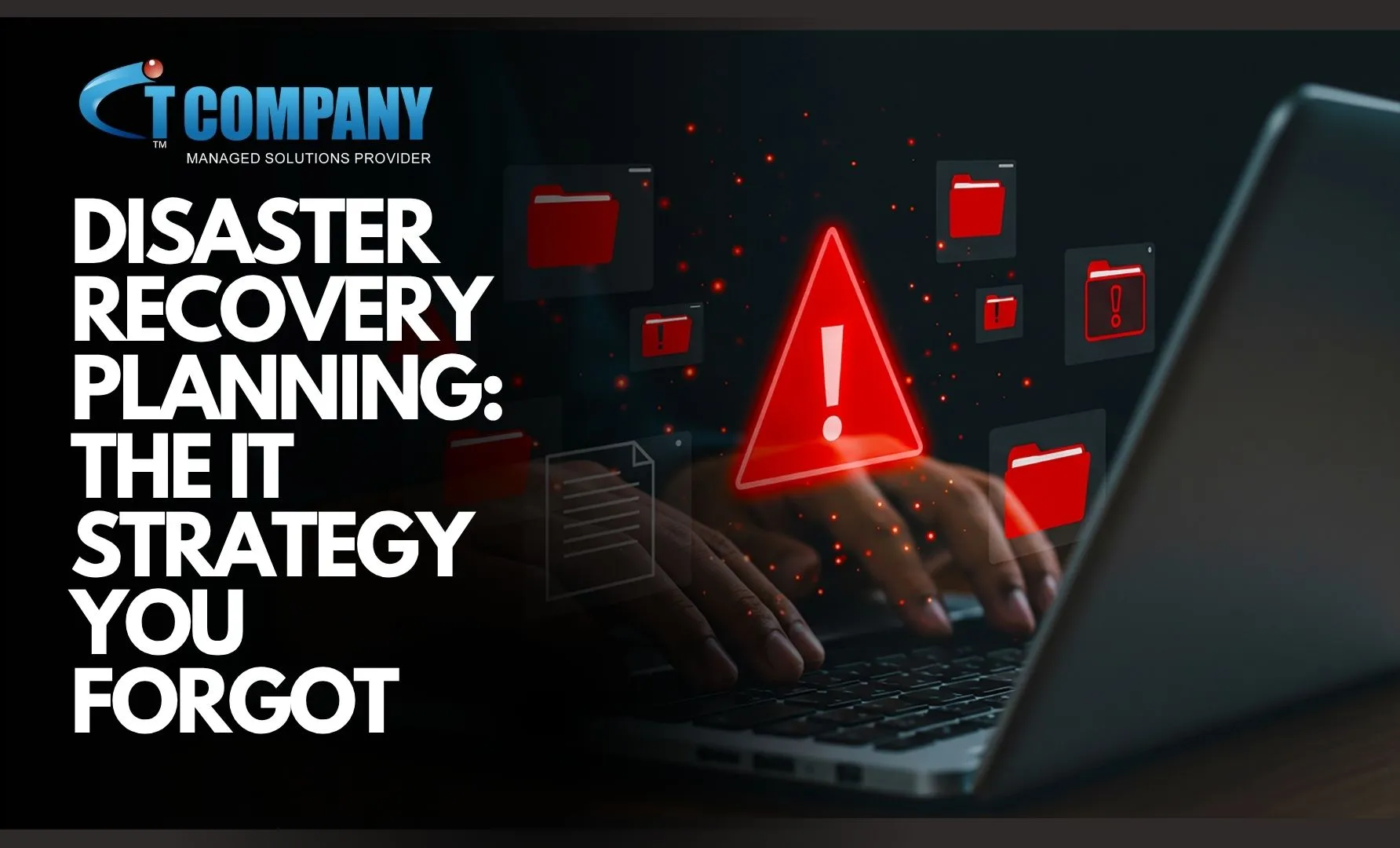Introduction: Why Disaster Recovery Planning Matters Now
There has never been a greater risk of company disruption in 2025, from ransomware and data breaches to natural disasters. Because of this, disaster recovery planning is an essential component that many IT strategies lack. Businesses, whether they are Toronto therapy clinics, healthcare facilities, or eCommerce startups, run the risk of irreversible data loss and catastrophic outages if they don’t have a tried-and-true, robust plan. IT Company helps businesses safeguard their continuity with strategic recovery planning, eliminating worst-case scenario risk and bringing trust and stability to your IT operations.
What Is Disaster Recovery Planning in IT?
At its core, Disaster Recovery Planning is a structured approach to restoring IT systems after an outage or compromise. It’s often paired with business continuity planning, but focuses specifically on:
- Data backup & restoration
- Server and application recovery
- System failover and failback
- Crisis communication processes
- Restoration timelines and escalation roles
This strategic roadmap ensures your systems are back online with minimal disruption to operations.
Business Continuity Planning vs Disaster Recovery
Although often used interchangeably, these are distinct:
- Business Continuity Planning covers entire operational resilience—staff, facilities, processes.
- Disaster Recovery Planning focuses specifically on technology, data, and IT infrastructure.
Essential Components of a Disaster Recovery Plan
Every robust DR plan must include:
- 📁 Data classification and backup schedules
- 💾 Backup and recovery procedures
- ⚙️ Recovery tools (cloud, snapshots, on-premise servers)
- 📶 Failover mechanisms and offsite replication
- 👥 Defined roles, communication protocol, vendor contacts
- 🧪 Recovery exercise schedule and revalidation steps
The Disaster Recovery Plan Components form the backbone of your IT resilience.
Cloud Disaster Recovery Solutions vs On Premise
Cloud-Based DR
- Instant replication to secure remote datacenters
- Rapid failover and minimal hardware maintenance
- Scalable and cost-efficient
On-Premise DR
- Full control over hardware and infrastructure
- Higher upfront costs
- Maintenance burden
Many businesses adopt a hybrid model—primary operations onsite, backups in the cloud—leveraging the best of both.
Managed Disaster Recovery Services
Managed Disaster Recovery Services from providers like IT Company deliver:
- Expert DR architecture and monitoring
- Automated backups with data integrity checks
- Rapid failover support when disaster strikes
- Regular DR plan updates and audits
- Transparent recovery reporting
This is ideal for businesses needing tailored cloud disaster recovery solutions without maintaining full internal expertise.
Recovery Objectives: RTO, RPO & Risk Management
- RTO (Recovery Time Objective): How quickly systems must be restored.
- RPO (Recovery Point Objective): Acceptable amount of data loss.
These metrics inform your IT infrastructure recovery plan, backup cadence, and failover strategies. Coupled with risk assessment, they define how your DR strategy supports actual business needs.
Testing & Validation: Why DR Drills Are Vital
A plan untested is unreliable. Disaster recovery plans must be validated via:
- Simulated outages and recovery drills
- Full system restores
- Failover tests to alternate data centers
- Continuous improvement based on results
Scheduled validation ensures your disaster recovery testing and validation keeps pace with evolving threats and infrastructure changes.
Cloud Disaster Recovery Solutions
Cloud disaster recovery solutions have transformed how businesses manage IT resilience. Unlike traditional methods, cloud-based recovery offers real-time replication, geo-redundancy, and near-instant failover—all without the cost of physical infrastructure. In 2025, business , Commerce platforms are choosing cloud DR for its scalability, cost-efficiency, and automation. IT Company leverages top-tier platforms like AWS, Azure, and private cloud networks to deliver tailored disaster recovery architecture. Whether you need full cloud failover, hybrid protection, or secure SaaS backup, our experts ensure encrypted, compliant, and high-speed recovery processes. With the rise of remote work and data sprawl, cloud disaster recovery is no longer optional—it’s essential for any modern business. Let IT Company help you build a recovery framework that’s fast, flexible, and future-ready.
Benefits for SMBs & Small Business Disaster Recovery
For small businesses, effective DR translates into:
- Lower downtime costs (even hours matter)
- Protection from data breach recovery strategy failures
- Insurance compliance (some policies require DR documentation)
- Competitive trust: clients favor providers who secure operations
IT Company specializes in disaster recovery for small businesses, offering affordable, scalable, and easy-to-manage recovery planning.
Regulatory Compliance & Security Considerations
In regulated sectors like healthcare, finance, or therapy (e.g., therapy near me in Toronto clinics), disaster recovery ties into broader compliance concerns:
- Data retention policies
- Rapid response to breaches
- Regulatory reporting
- Secure backup encryption
A managed DR partner like IT Company ensures compliance readiness with integrated security measures.
How IT Company Builds Your Resilient IT Strategy
IT Company’s approach to Disaster Recovery Planning includes:
- Initial risk and impact assessment
- Defining RTO/RPO aligned with your business needs
- Designing hybrid DR infrastructure (cloud + on-premise)
- Automating backups and logging systems health
- Conducting DR testing and quarterly validation
- Staff training and incident communication plans
Conclusion
Without Disaster Recovery Planning, your IT strategy is incomplete—and your business is exposed. Whether you’re a startup in Melbourne, or a retail firm serving clients across Australia, a structured, tested DR plan transforms unknown risks into manageable outcomes. With IT Company as your partner, you get not only the technology infrastructure, but also human-driven planning, continuous monitoring, and compliance assurance. Disaster Recovery Planning is no longer a luxury—it’s a business necessity in 2025. From cyberattacks to natural disasters, the threats are real and evolving. Without a clear, tested plan, even a short outage can cause major financial losses, damaged reputation, or even business closure. With IT Company’s managed disaster recovery services, your business gets the resilience it needs to stay online, secure, and trusted. Whether you’re a startup, SMB, or an enterprise needing compliance, IT Company delivers peace of mind through proactive IT strategy and fast recovery solutions. Don’t wait for disaster—prepare with confidence today.


Leave a Reply